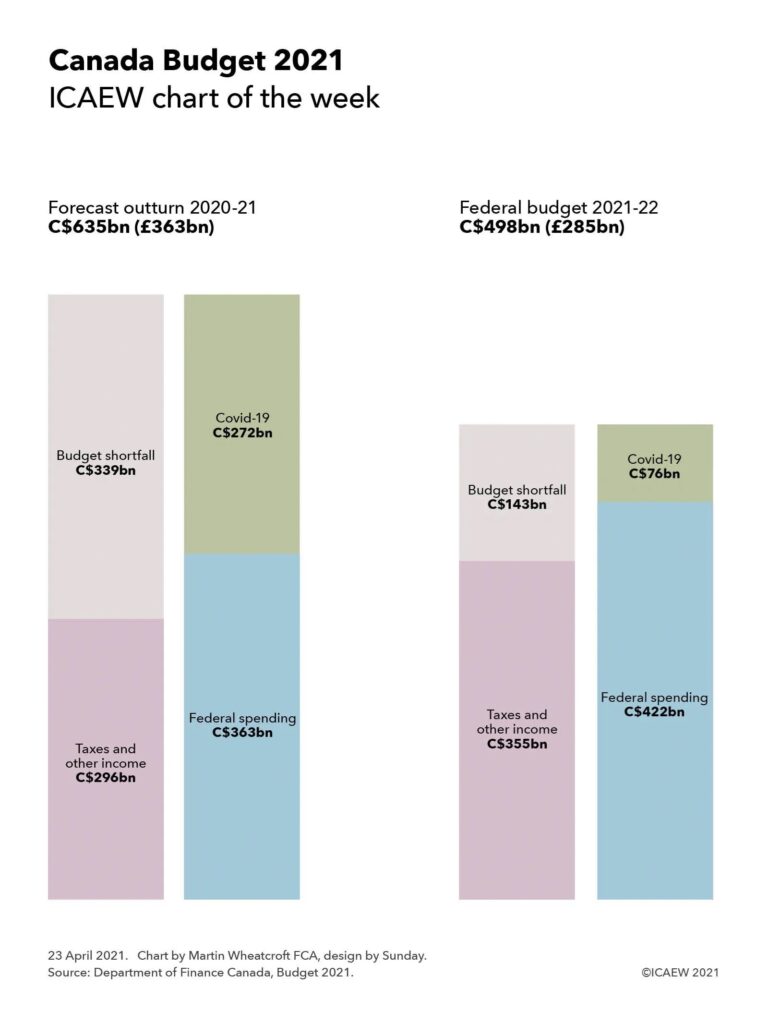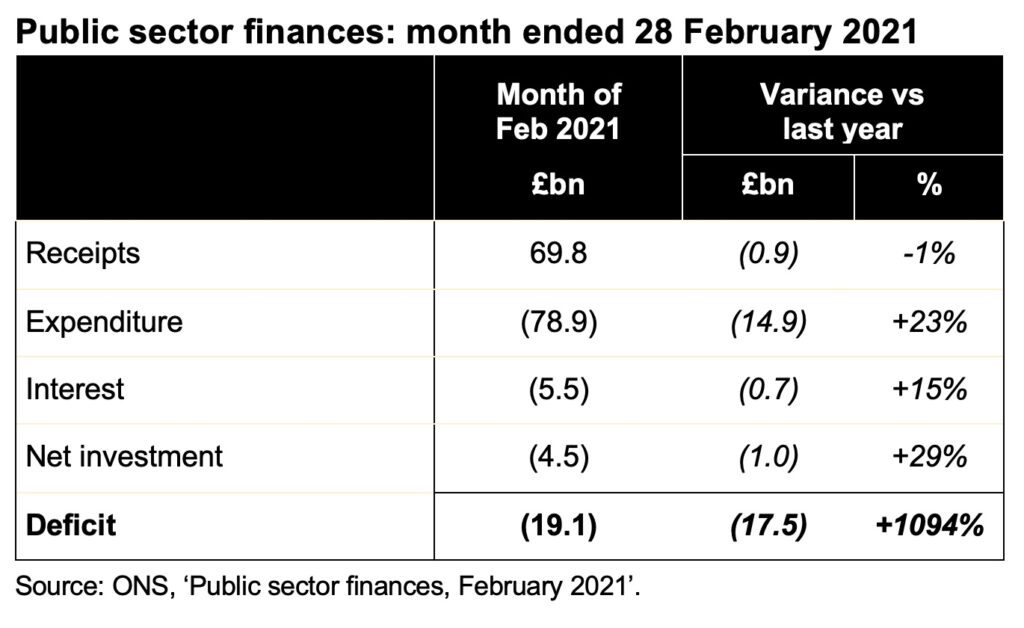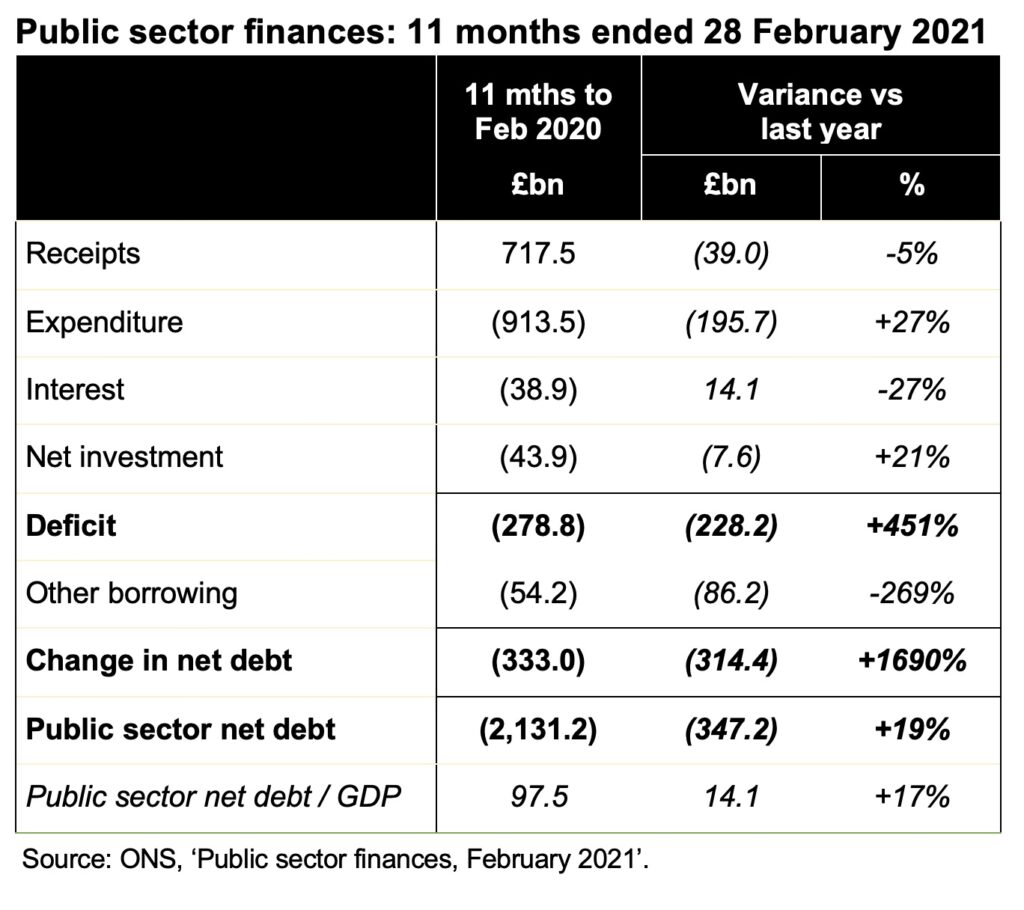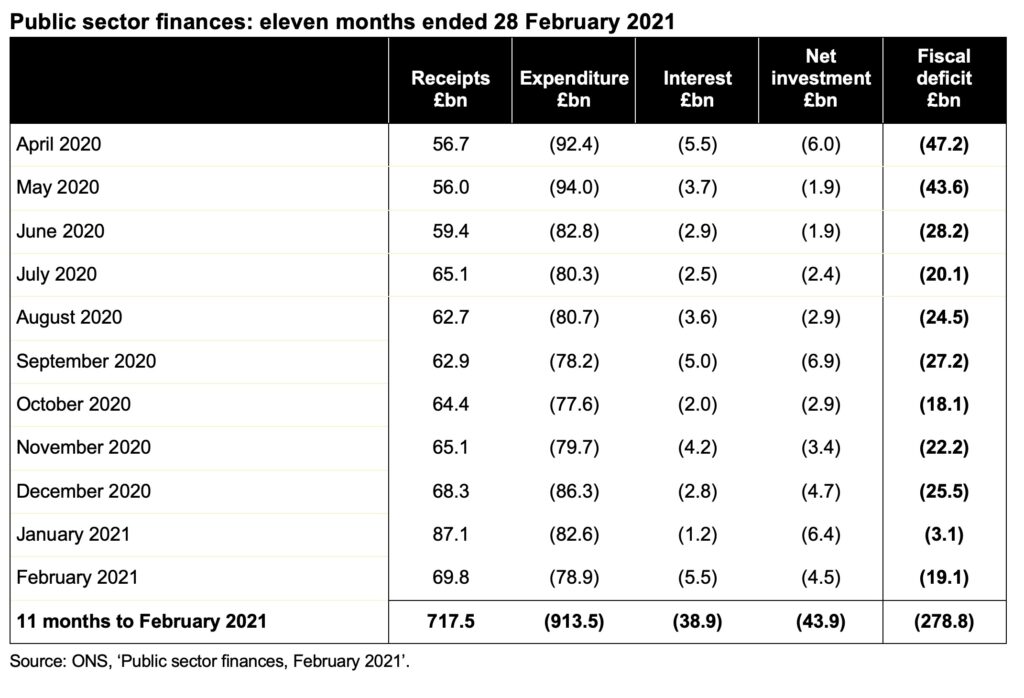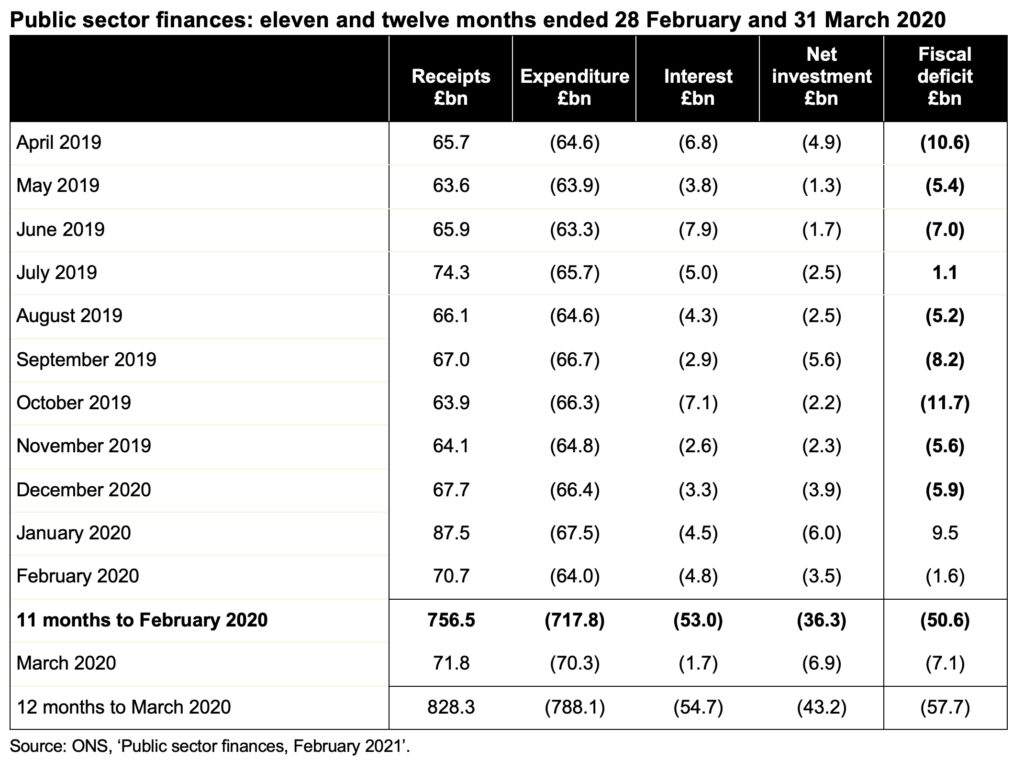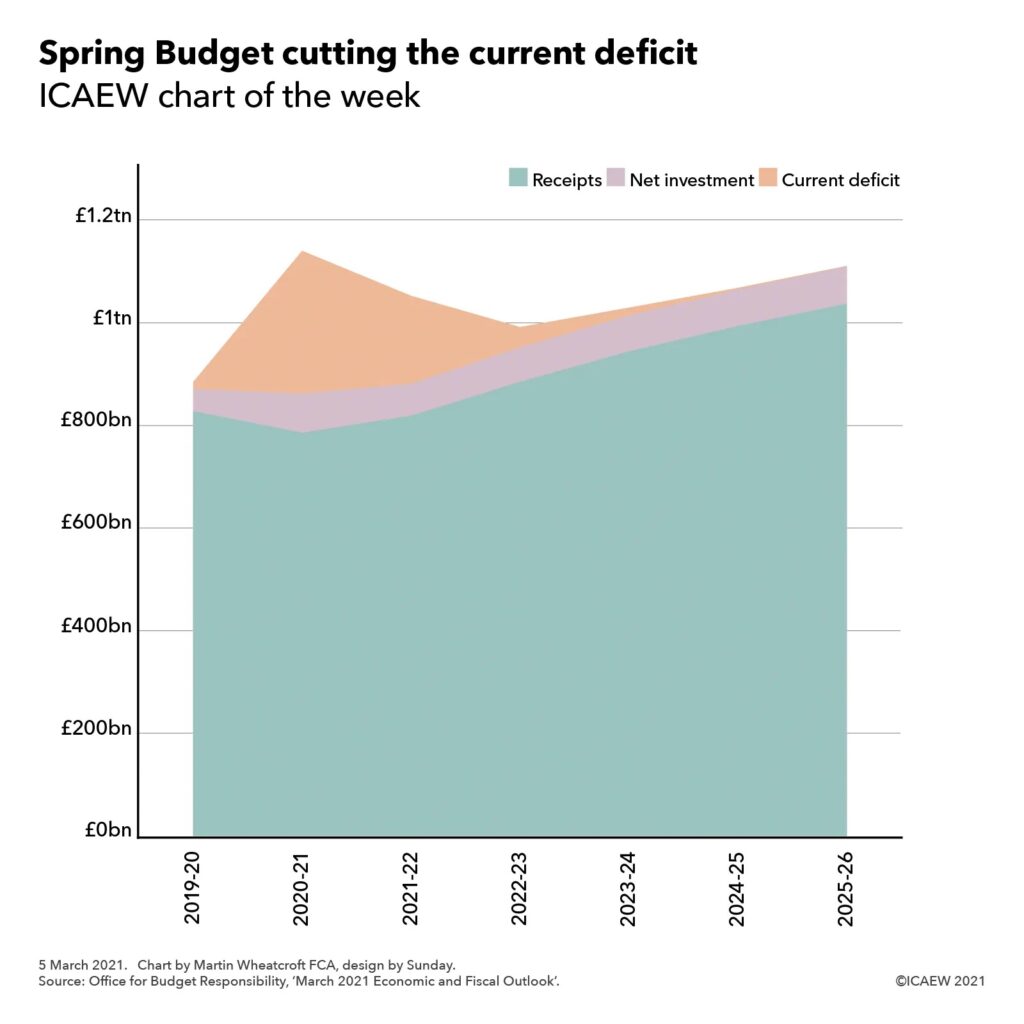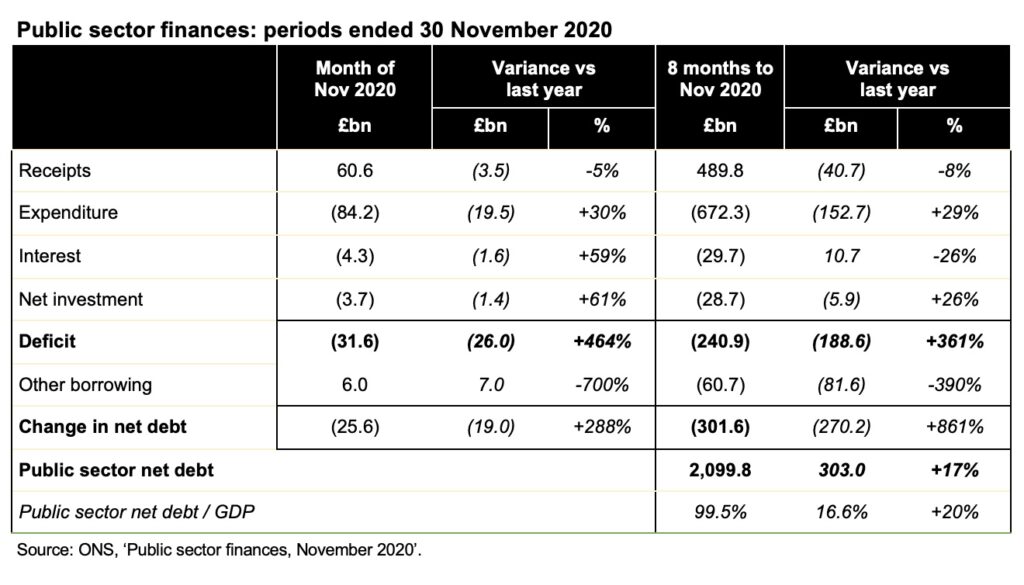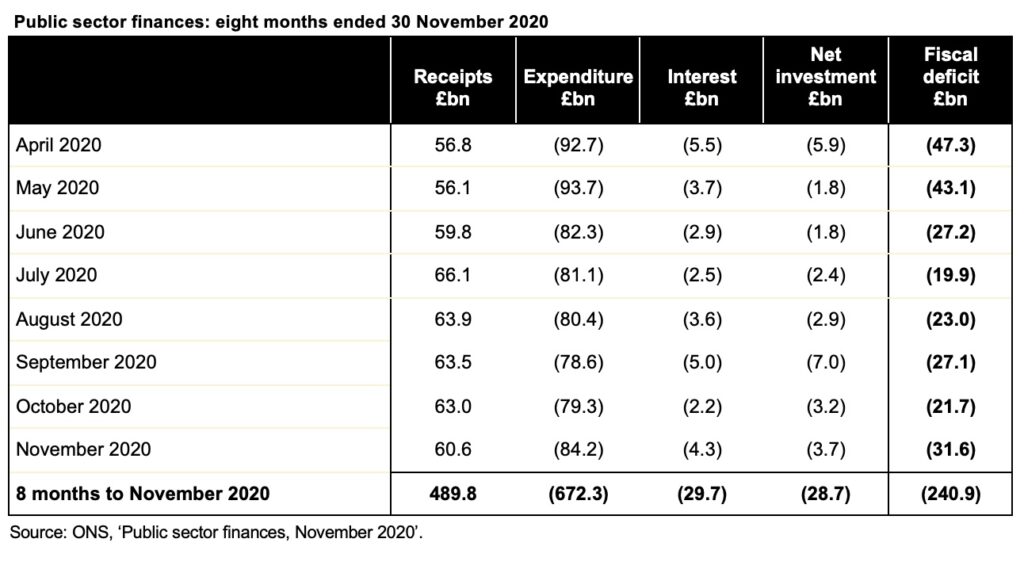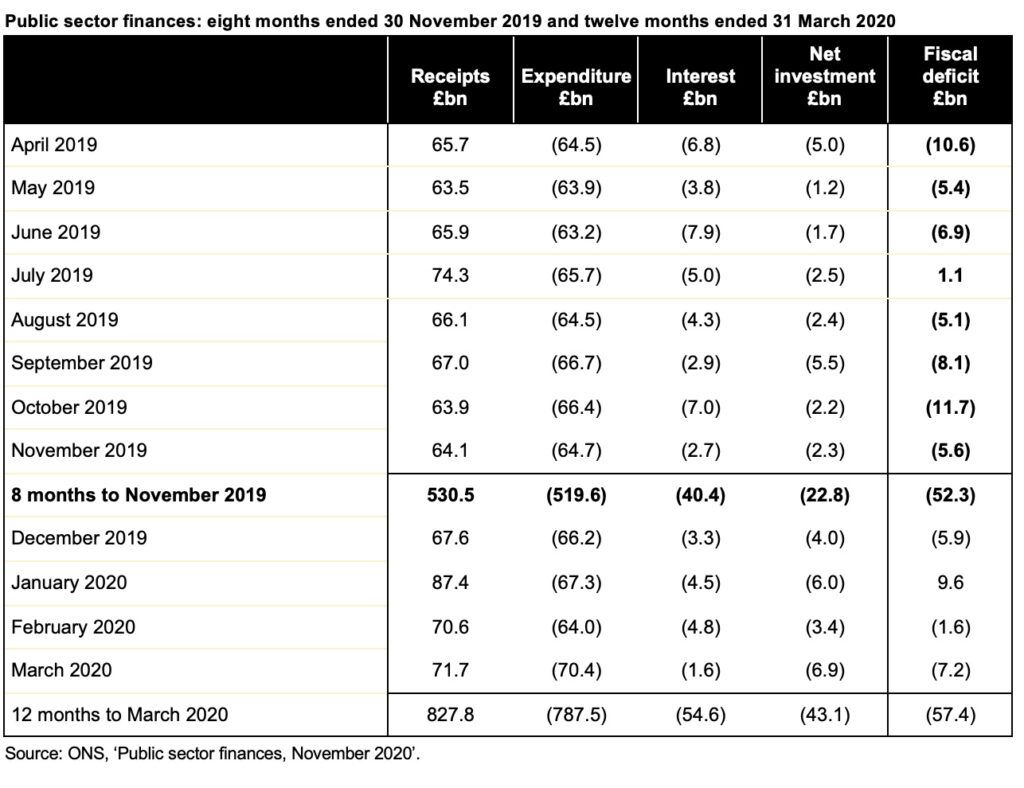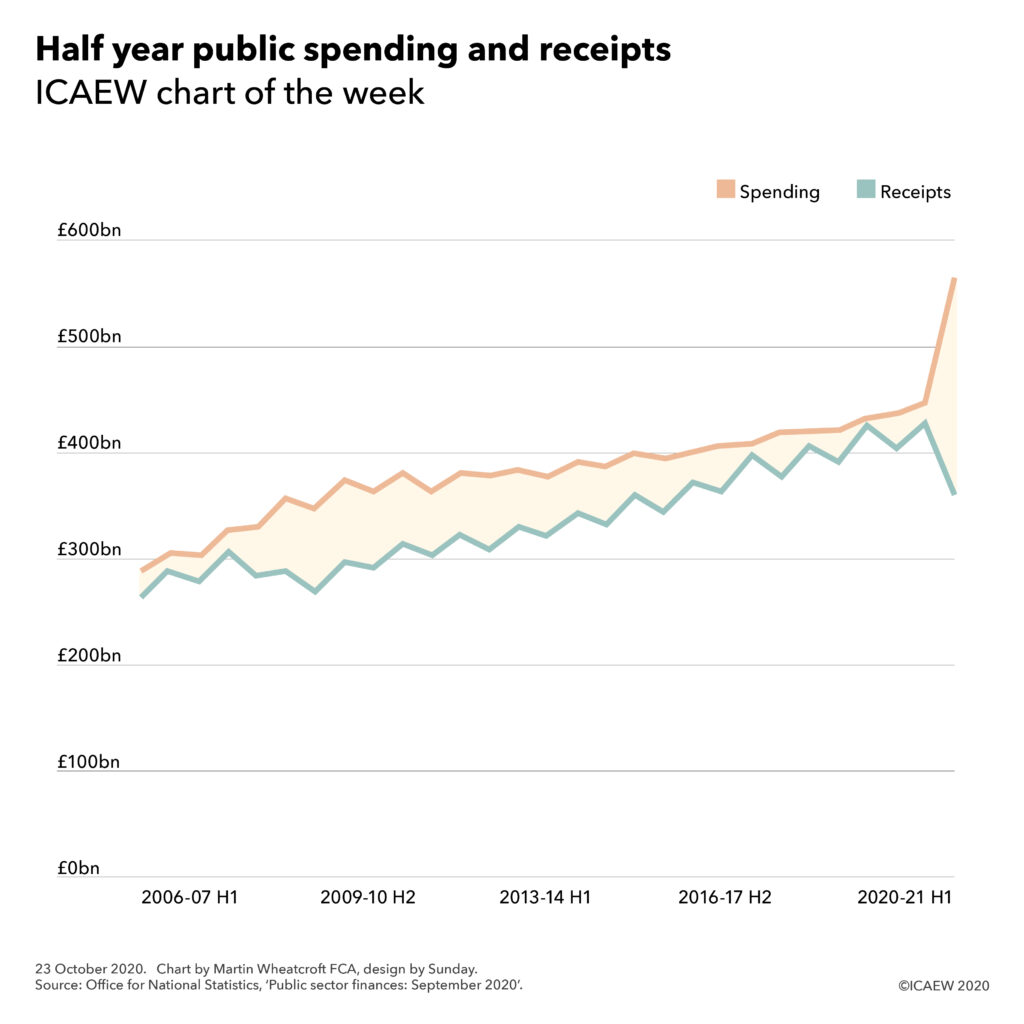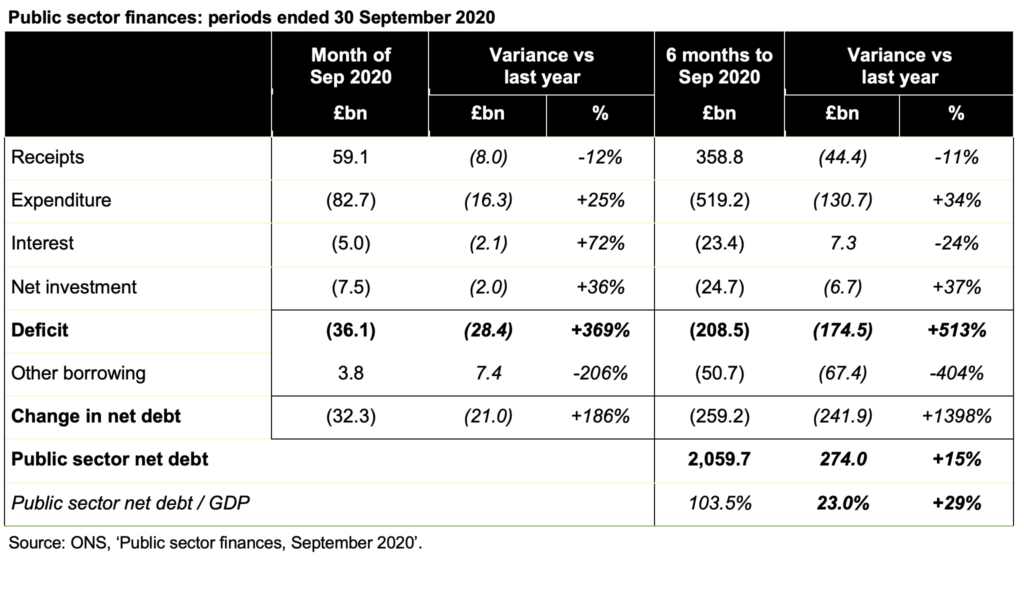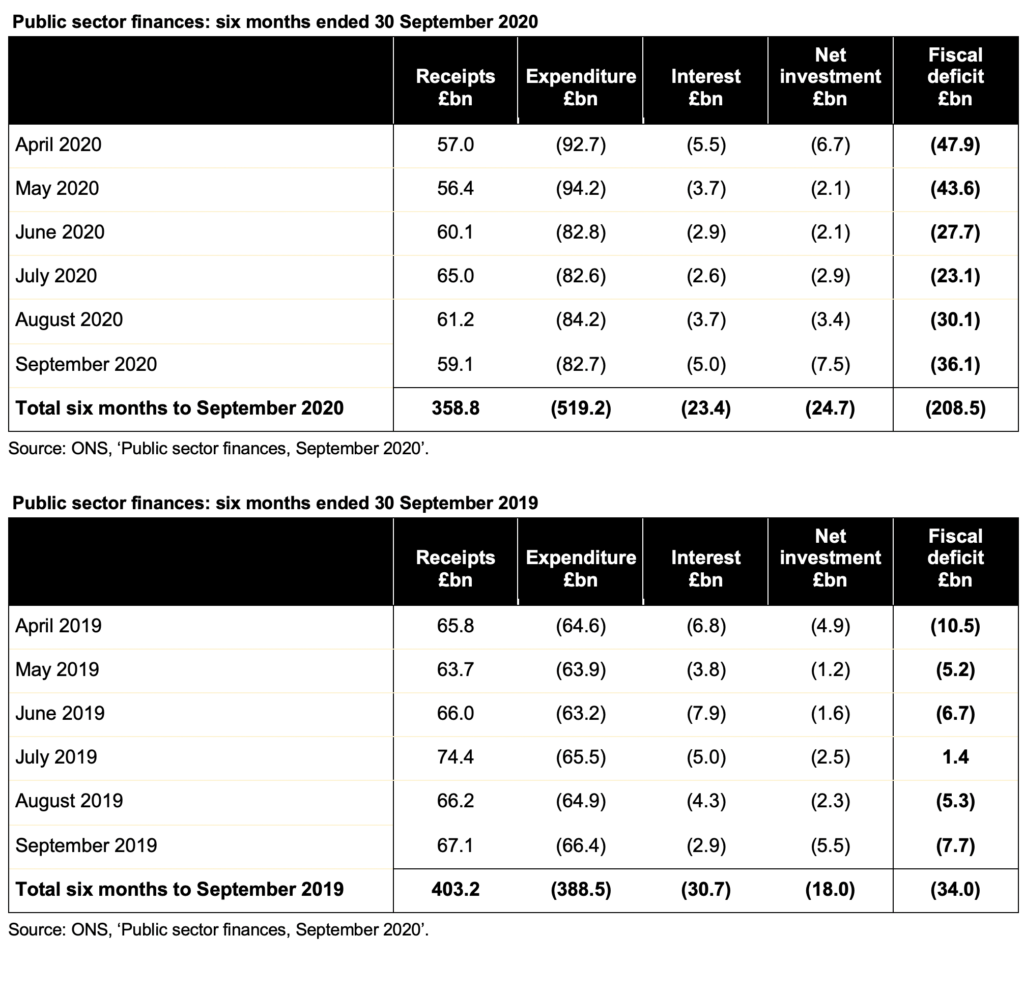Huge economic shock combined with unprecedented fiscal interventions results in a provisional fiscal deficit of £303bn or 14.5% of GDP for the year ended 31 March 2021.
The Office for National Statistics today published its first estimate of fiscal history, reporting a provisional fiscal deficit of £303bn or 14.5% of GDP for 2020-21 and a £344bn increase in public sector net debt from £1.8bn to £2.14tn at 31 March 2021, breaking peacetime records for the public finances. This compares with an official forecast for the deficit of £55bn presented by the Chancellor just prior to the start of the financial year last March, admittedly together with the first in a series of mini-fiscal announcements that saw spending soar to tackle the pandemic at the same time as tax revenues collapsed.
The damage is less than had been feared at some points during the past year, with the provisional deficit coming in below the £355bn estimated by the Office for Budget Responsibility (OBR) at the time of the Spring Budget 2021 last month and substantially below their forecast of £394bn in November 2020 at the time of the Spending Review. While some of this is down to better economic performance as lockdowns have been less harmful than anticipated, there has been an offsetting increase in the forecast deficit for the 2021-22 financial year starting this month to £234bn compared with the pre-pandemic projection of £67bn. The provisional deficit of £303bn also excludes somewhere in the region of £27bn for bad debts on covid-related lending that will need to be accounted for at some point.
The deficit is only part of the story, as the government has borrowed significant amounts to finance tax deferrals and lending to business to help them survive. As a consequence, public sector net debt has increased by more than the deficit, with an increase of £344bn to a provisional £2,142bn or 97.7% of GDP at 31 March 2021. Debt is expected to rise over the next couple of years to in excess of £2.5tn.
While the numbers for both the deficit and debt are likely to be revised up or down over the next few months, the big picture won’t change – debt as a proportion of GDP has increased from 35% in March 2008 before the financial crisis to around 80% of GDP a couple of years ago before climbing to in the region of 100% of GDP today. These numbers don’t include other significant liabilities in the government balance sheet such as public sector employee pension obligations, nor do they include future financial commitments such as for welfare benefits. Despite that they still provide an indication of just how significantly the UK’s fiscal position has changed over a period of less than a decade and a half.
Fortunately, interest rates have been coming down even faster than debt has been going up, enabling the Government to reduce its interest bill over the course of the year. However, higher leverage comes with a greater exposure to movements in interest rates going forward, a concern for the Chancellor in mapping out his plans for the next few years.
While the Spring Budget last month provided some indications on how the Chancellor aims to stabilise the public finances through a combination of higher investment spending, short-term economic stimulus and a corporation tax rise, there is as yet no indication of his longer-term fiscal strategy to address the unsustainability of the public finances identified by the OBR before the pandemic.
While the government has been taking steps to set the foundations for better management of the public finances, for example through the National Infrastructure Strategy released last year, the soon to be launched National Data Strategy and actions coming out of HM Treasury’s recent Balance Sheet Review, there is no clear plan for how the government intends to fund pensions, health and social care over the next quarter of a century. These costs will continue to grow as many more people live longer in retirement and the working age population shrinks, just at a time that huge investments are needed to achieve net zero and pressures on public spending are unlikely to disappear. At the same time the government needs to work out how it can ensure the public finances are more resilient and better prepared for future crises – from whatever corner they may come.
Alison Ring, ICAEW Public Sector Director, said: “Today’s numbers cap a dramatic year for the UK’s public finances, and show this is the biggest deficit since the end of World War Two. However, the damage is less than had been feared, with the shortfall lower than the OBR had forecast.
Ultra-low borrowing costs have provided the government with the room it needed to provide unprecedented spending to tackle the coronavirus pandemic, protect jobs and prevent the economy from crashing, as well as the opportunity to invest for growth in the coming years.
However, even as the economy starts to recover, the legacy of higher debt and a greater exposure to changes in interest rates will be with us for years, if not decades to come. The public finances were already on an unsustainable path before the pandemic, and the government will need a long-term strategy for rebuilding them.”
